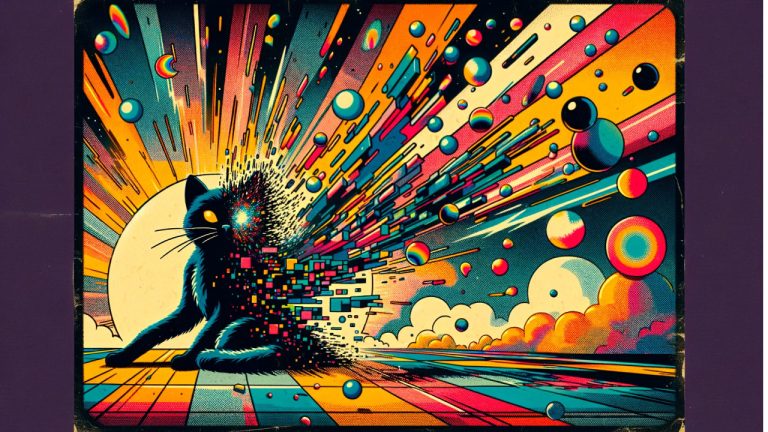
“Quantum Cats” Bitcoin NFTs was marred by technical issues, forcing the company to postpone the sale. Despite an initially successful minting of nearly 1,000 cats, server overload led to an unexpected delay, causing frustration among eager buyers.
‘Quantum Cats’ Bitcoin NFT Launch Stumbles: Rescheduled Amid Technical Woes
The sale of Taproot Wizards’ first collection of Bitcoin inscriptions, “Quantum Cats,” faced technical difficulties, causing frustration among users and leading to an unforeseen postponement. This setback occurred during the launch of the debut collection, designed to commemorate the Bitcoin improvement proposal known as OP_CAT.
The initial sale, featuring approximately 3,000 digital cats, began with a two-hour “whitelist” window at 17:00 UTC on Monday. However, due to unexpected technical issues, the sale was abruptly pushed to Tuesday. Taproot Wizards, in a statement on social media platform X, attributed the delay to overwhelming demand exceeding server capacity.
Despite the hiccups, the project successfully minted nearly 30% of the cats on Monday, equivalent to roughly 1,000 units, generating an estimated 100 bitcoin (about $4.3 million). Each cat was priced at 0.1 bitcoin, or $4,300, potentially raising up to 300 bitcoin ($12.9 million) upon complete sale.
The setback marks a rocky start for Taproot Wizards, which previously secured $7.5 million in a seed funding round last November. The firm’s focus on the burgeoning field of Bitcoin inscriptions, particularly through the Ordinals protocol, has been met with high expectations. Notably, the “Genesis Cat,” the first item in the Quantum Cats series, fetched a remarkable $254,000 at a recent Sotheby’s auction.
Originally, the sale was scheduled to pause for an hour following the two-hour whitelist window before resuming for general public purchase. However, the complications led to a flurry of complaints on the project’s Discord channel.
In response to the mishap, Udi Wertheimer, co-founder of Taproot Wizards, announced a rescheduled minting date, set for Thursday, Feb. 1, at 12pm ET. The revised plan extends the whitelist mint to five hours, concluding at 5pm ET, followed by a one-hour break before the public mint begins at 6pm ET. This adjustment aims to accommodate global time zones and acknowledge the efforts of early risers around the world.
Wertheimer reassured that despite the technical difficulties, all transactions processed on the original minting day were secure, with nearly 1,000 cats minted successfully. He confirmed that all funds and cats are safe, promising that everyone who initiated a transaction would receive a Quantum Cat. The distribution of these cats to wallets is scheduled for the day following the mint, with a dedicated website enabling users to identify their minted cats.
Reflecting on the challenges faced during the mint and the team’s determination to rectify the situation, Wertheimer drew a parallel with the company’s journey. He noted that on Feb. 1, 2023, they mined the first 4MB block on Bitcoin with the first Taproot Wizard, overcoming significant hurdles the night before. Drawing inspiration from this milestone, Wertheimer expressed confidence in delivering Quantum Cats to the world and taking Bitcoin to new heights, despite the current setbacks.
Are you going to try and get a cat in the public mint? Share your thoughts and opinions about this subject in the comments section below.
from Bitcoin News https://ift.tt/F3LzGnv
Comments
Post a Comment